osa vedere a Gubbio. Ecco una mini-guida per partire alla scoperta di Gubbio, la città dei “matti”, senza farti trovare impreparato. Cosa vedere, cosa fare e cosa mangiare a Gubbio, una delle città più belle e caratteristiche dell’Umbria.
Cominciamo il nostro tour eugubino dal Duomo, chiesa maggiore di Gubbio e tesoro d’arte. Entrate al suo interno per ammirare le opere dei maggiori artisti eugubini del Cinquecento e i due organi della stessa epoca ivi custoditi.
La scenografica e panoramica piazza Grande ospita anche Palazzo dei Consoli, simbolo della città, realizzato in stile gotico a testimoniare l’importanza di Gubbio in epoca medievale. Al suo interno ospita il museo comunale, il “campanone” e le sette “Tavole Eugubine”, il più importante documento per la storia dei popoli italici, datate fra il III e il II secolo a.C.
Di fronte al Duomo sorge il Palazzo Ducale, eretto nel secondo Quattrocento per volontà del Duca Federico di Montefeltro, di cui si può ammirare lo studiolo (copia fedele dell’originale esposto al Metropolitan Museum di New York) oltre a uno splendido cortile interno composto da una serie di archi a tutto sesto sorretti da colonne e capitelli decorati.
Degna di nota la Casa di S. Ubaldo, antica casa torre dove abitava il Santo patrono di Gubbio che risale a un periodo compreso fra il Due e Trecento, come testimoniano alcune tracce di decorazioni murali originali contenute all’interno.
Non tutti sanno che … >> Nella Casa di S. Ubaldo, una volta ogni 25 anni, avviene il resturo dei ”ceri”, protagonisti indiscussi dell’attesissima Corsa dei Ceri
Fuori dalle mura antiche vi troverete faccia a faccia con il Teatro Romano, risalente aI I secolo a.C. e restaurato fra l’Otto e il Novecento che tuttora durante la stagione estiva è il palcoscenico per spettacoli classici.
>>Vuoi visitare Gubbio? Consulta ora le offerte dei migliori hotel a Gubbio.
Cosa fare a Gubbio
Cosa fare a Gubbio in un giorno? Non lasciate la “città dei matti” senza aver fatto un giro alParco Ranghiasci, area verde che si arrampica lungo le vecchie mura partendo da una delle antiche porte della città e che offre una delle migliori viste su Gubbio.
Non tutti sanno che … >> A Gubbio potete aggiudicarvi la “patente dei matti”. Come? Raggiungete Largo Bargello dove troverete una piccola fontana attorno alla quale dovrete girare tre volte per guadagnarvi la patente di matti (e la cittadinanza eugubina)!
Se non soffrite di vertigini vale la pena di salire sulla cima del Monte Ingino (908 s.l.m.) con la funivia per ammirare la Basilica di Sant’Ubaldo che ospita le spoglie del santo e i famosi ceri.
Obbligatorie una visita a una delle antiche botteghe di fabbri che si troverete in giro per il paese, dove ancora oggi si lavorano a mano materiali incandescenti battendoli sull’incudine.
>> Ci sono offerte in scadenza! Clicca e consulta la lista dei migliori agriturismi nella zona di Gubbio!
Cosa mangiare a Gubbio
Se vi è venuta fame concedetevi qualche specialità gastronomica locale, ve la siete meritata!
>>Consulta i ristoranti migliori nella zona di Gubbio! Clicca e prenota.
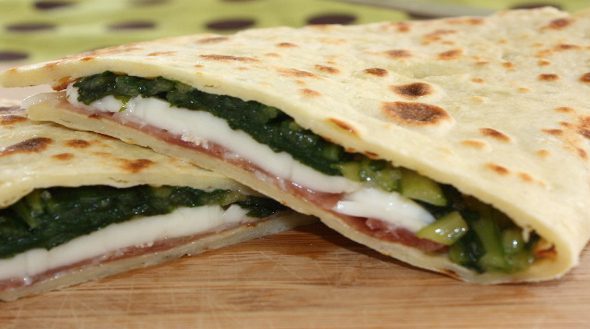
Tra tante squisite tipicità non è facile scegliere cosa mangiare a Gubbio, ma è a dir poco immorale ripartire senza aver assaggiato almeno la crescia al panaro (una sorta di focaccia salata da gustare con gli affettai locali e con il friccò di agnello, anatra, pollo e coniglio), latorta al formaggio, i piatti con il tartufo, il baccalà (immerso 2 g nel latte e poi cotto in forno con le spezie) e il brustengo, un pane fritto che può essere mangiato accompagnandolo con pancetta, prosciutto, salsiccia, cipolla o rosmarino. Tra i dolci tradizionali ricordiamo iGanascioni delle Suore di Santa Lucia, i quali venivano anticamente offerti insieme allaBarcarola (caffè d’orzo e mistrà).
>>Se hai deciso di vedere Gubbio e gustare le specialità culinarie locali ti consigliamo di contattare ora gli agriturismi nelle sue vicinanze >> clicca questo link.
Discover the best things to do in Gubbio, the “city of fools” with our mini-guide. The best things to do and typical food of one of the most fascinating Umbria’s cities.
Let’s begin our Gubbio tour from the Cathedral, the main church in Gubbio and art treasure. Enter inside to admire the works of the greatest Gubbio’s artists of the sixteenth century and the two organs of the same age kept there.
The scenic and panoramic piazza Grande also hosts the symbol of the town, Consuls Palace, built in Gothic style and witness of the importance of Gubbio in medieval times. Inside it you will find the municipal museum, the “big bell” and the seven “Eugubine Tables”, dated between the third and second centuries BC, definetly the most important document for the history of the ancient italic people.
In front of the cathedral it’s easy to look at Dukes Palace, built in the fifteenth century according to the will of Duke Federico da Montefeltro, of which you can admire the studio (a faithful copy of the original exhibited at the Metropolitan Museum in New York) as well as a wonderful inner courtyard consists of a series of arches supported by columns and decorated capitals.
Don’t forget to visit the St. Ubaldo’s House, the ancient tower house where the Gubbio’s patron saint used to live.This house dates back to a period between the thirteenth and fourteenth centuries, as evidenced by some traces of the original wall decorations in the inside.
Perhaps you did not know that … >> In S. Ubaldo’s House, once every 25 years, there is the restoration of “Ceri” (“candles”), the undisputed protagonists of Gubbio’s Corsa dei Ceri
Outside the ancient walls you will note a real Roman Theatre which dates back to the first century BC and has been renovated between the nineteenth and the twentieth century. Now the Roman Thatre hosts classical performances during the summer season.
>> Do you want to discover Gubbio’s treasures? Check it out now of the best farmhouses in Gubbio.
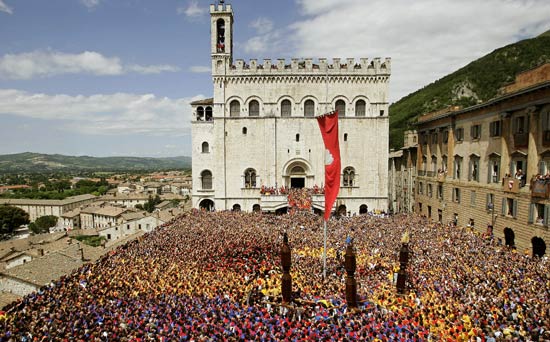
Things to do in Gubbio
There is more to do in Gubbio in one day. Do not leave the “city of fools,” without a trip to Ranghiasci Park, the green area that climbs along the old walls starting from one of the ancient gates of the city and offering one of the best views of Gubbio.
Perhaps you did not know that … >> Only in Gubbio you can get the “fool licence”. How? Reach Largo Bargello where you will find a small fountain. Run for three times around the fountain and you will earn a “fool licence” (and eugubina citizenship )!
If you do not suffer from vertigo worth the climb to the summit of Ingino Mount (908 m asl) with the cable car to admire St. Ubaldo’s Basilica which hosts the remains of the saint and the famous Ceri.
If you like to discover the real city life, visit to one of the ancient blacksmiths shops that will you find around the town, where they still work incandescent materials beating on the anvil.
There are offers for vacation rentals and hotels in the areas of Gubbio! Click and Consult them immediately.
Gubbio’s food, Umbrian cuisine, Italian food
You got hungry? Discover what our mini-guide suggests you about what to eat in Gubbio!
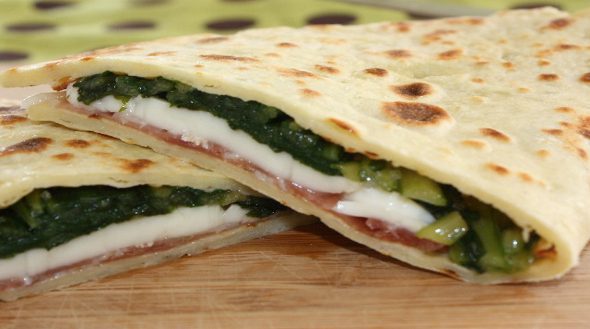
See the best restaurants in the area of Gubbio! >> Click here and book.
There is a lot of choice on what to eat in Gubbio; typical delicious dishes you can not leave without having tasted!
Try crescia (a kind of flat salted bread to taste with the local cured meat or with Friccò of lamb, duck, chicken and rabbit), cheese pie, the dishes with truffles and brustengo, a fried bread that can be eaten and served with bacon, ham, sausage, onion and rosemary. The traditional desserts include the Ganascioni of Saint Lucia’s Sisters, which were formerly offered together with the Barcarolle (barley coffee and anisette).
If you’ve decided to visit Gubbio and taste Umbrian cuisine you should contact now farmhouses near Gubbio >> click this link.
Discover the best things to do in Gubbio, the “city of fools” with our mini-guide. The best things to do and typical food of one of the most fascinating Umbria’s cities.
Let’s begin our Gubbio tour from the Cathedral, the main church in Gubbio and art treasure. Enter inside to admire the works of the greatest Gubbio’s artists of the sixteenth century and the two organs of the same age kept there.The scenic and panoramic piazza Grande also hosts the symbol of the town, Consuls Palace, built in Gothic style and witness of the importance of Gubbio in medieval times. Inside it you will find the municipal museum, the “big bell” and the seven “Eugubine Tables”, dated between the third and second centuries BC, definetly the most important document for the history of the ancient italic people.
In front of the cathedral it’s easy to look at Dukes Palace, built in the fifteenth century according to the will of Duke Federico da Montefeltro, of which you can admire the studio (a faithful copy of the original exhibited at the Metropolitan Museum in New York) as well as a wonderful inner courtyard consists of a series of arches supported by columns and decorated capitals.
Don’t forget to visit the St. Ubaldo’s House, the ancient tower house where the Gubbio’s patron saint used to live.This house dates back to a period between the thirteenth and fourteenth centuries, as evidenced by some traces of the original wall decorations in the inside.
Perhaps you did not know that … >> In S. Ubaldo’s House, once every 25 years, there is the restoration of “Ceri” (“candles”), the undisputed protagonists of Gubbio’s Corsa dei Ceri
Outside the ancient walls you will note a real Roman Theatre which dates back to the first century BC and has been renovated between the nineteenth and the twentieth century. Now the Roman Thatre hosts classical performances during the summer season.
>> Do you want to discover Gubbio’s treasures? Check it out now of the best farmhouses in Gubbio.
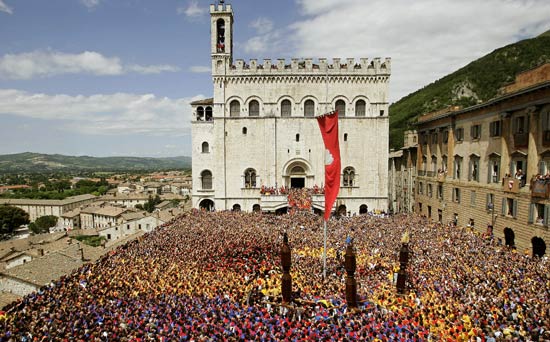
Things to do in Gubbio
There is more to do in Gubbio in one day. Do not leave the “city of fools,” without a trip to Ranghiasci Park, the green area that climbs along the old walls starting from one of the ancient gates of the city and offering one of the best views of Gubbio.
Perhaps you did not know that … >> Only in Gubbio you can get the “fool licence”. How? Reach Largo Bargello where you will find a small fountain. Run for three times around the fountain and you will earn a “fool licence” (and eugubina citizenship )!
If you do not suffer from vertigo worth the climb to the summit of Ingino Mount (908 m asl) with the cable car to admire St. Ubaldo’s Basilica which hosts the remains of the saint and the famous Ceri.
If you like to discover the real city life, visit to one of the ancient blacksmiths shops that will you find around the town, where they still work incandescent materials beating on the anvil.
There are offers for vacation rentals and hotels in the areas of Gubbio! Click and Consult them immediately.
Gubbio’s food, Umbrian cuisine, Italian food
You got hungry? Discover what our mini-guide suggests you about what to eat in Gubbio!

See the best restaurants in the area of Gubbio! >> Click here and book.
There is a lot of choice on what to eat in Gubbio; typical delicious dishes you can not leave without having tasted!
Try crescia (a kind of flat salted bread to taste with the local cured meat or with Friccò of lamb, duck, chicken and rabbit), cheese pie, the dishes with truffles and brustengo, a fried bread that can be eaten and served with bacon, ham, sausage, onion and rosemary. The traditional desserts include the Ganascioni of Saint Lucia’s Sisters, which were formerly offered together with the Barcarolle (barley coffee and anisette).
If you’ve decided to visit Gubbio and taste Umbrian cuisine you should contact now farmhouses near Gubbio >> click this link.
Discover the best things to do in Gubbio, the “city of fools” with our mini-guide. The best things to do and typical food of one of the most fascinating Umbria’s cities.
Let’s begin our Gubbio tour from the Cathedral, the main church in Gubbio and art treasure. Enter inside to admire the works of the greatest Gubbio’s artists of the sixteenth century and the two organs of the same age kept there.
The scenic and panoramic piazza Grande also hosts the symbol of the town, Consuls Palace, built in Gothic style and witness of the importance of Gubbio in medieval times. Inside it you will find the municipal museum, the “big bell” and the seven “Eugubine Tables”, dated between the third and second centuries BC, definetly the most important document for the history of the ancient italic people.
In front of the cathedral it’s easy to look at Dukes Palace, built in the fifteenth century according to the will of Duke Federico da Montefeltro, of which you can admire the studio (a faithful copy of the original exhibited at the Metropolitan Museum in New York) as well as a wonderful inner courtyard consists of a series of arches supported by columns and decorated capitals.
Don’t forget to visit the St. Ubaldo’s House, the ancient tower house where the Gubbio’s patron saint used to live.This house dates back to a period between the thirteenth and fourteenth centuries, as evidenced by some traces of the original wall decorations in the inside.
Perhaps you did not know that … >> In S. Ubaldo’s House, once every 25 years, there is the restoration of “Ceri” (“candles”), the undisputed protagonists of Gubbio’s Corsa dei Ceri
Outside the ancient walls you will note a real Roman Theatre which dates back to the first century BC and has been renovated between the nineteenth and the twentieth century. Now the Roman Thatre hosts classical performances during the summer season.
>> Do you want to discover Gubbio’s treasures? Check it out now of the best farmhouses in Gubbio.
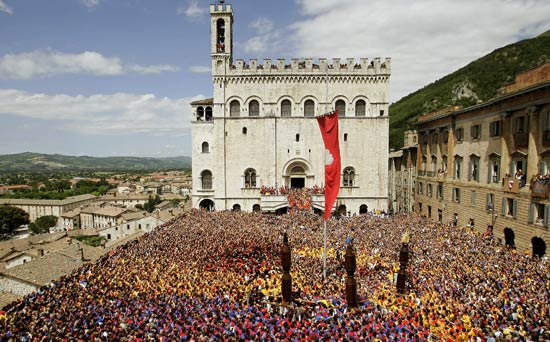
There is more to do in Gubbio in one day. Do not leave the “city of fools,” without a trip to Ranghiasci Park, the green area that climbs along the old walls starting from one of the ancient gates of the city and offering one of the best views of Gubbio.
Perhaps you did not know that … >> Only in Gubbio you can get the “fool licence”. How? Reach Largo Bargello where you will find a small fountain. Run for three times around the fountain and you will earn a “fool licence” (and eugubina citizenship )!
If you do not suffer from vertigo worth the climb to the summit of Ingino Mount (908 m asl) with the cable car to admire St. Ubaldo’s Basilica which hosts the remains of the saint and the famous Ceri.
If you like to discover the real city life, visit to one of the ancient blacksmiths shops that will you find around the town, where they still work incandescent materials beating on the anvil.
There are offers for vacation rentals and hotels in the areas of Gubbio! Click and Consult them immediately.
Gubbio’s food, Umbrian cuisine, Italian food
You got hungry? Discover what our mini-guide suggests you about what to eat in Gubbio!

See the best restaurants in the area of Gubbio! >> Click here and book.
There is a lot of choice on what to eat in Gubbio; typical delicious dishes you can not leave without having tasted! Try crescia (a kind of flat salted bread to taste with the local cured meat or with Friccò of lamb, duck, chicken and rabbit), cheese pie, the dishes with truffles and brustengo, a fried bread that can be eaten and served with bacon, ham, sausage, onion and rosemary. The traditional desserts include the Ganascioni of Saint Lucia’s Sisters, which were formerly offered together with the Barcarolle (barley coffee and anisette).
If you’ve decided to visit Gubbio and taste Umbrian cuisine you should contact now farmhouses near Gubbio >> click this link.
Discover the best things to do in Gubbio, the “city of fools” with our mini-guide. The best things to do and typical food of one of the most fascinating Umbria’s cities.
Let’s begin our Gubbio tour from the Cathedral, the main church in Gubbio and art treasure. Enter inside to admire the works of the greatest Gubbio’s artists of the sixteenth century and the two organs of the same age kept there.
The scenic and panoramic piazza Grande also hosts the symbol of the town, Consuls Palace, built in Gothic style and witness of the importance of Gubbio in medieval times. Inside it you will find the municipal museum, the “big bell” and the seven “Eugubine Tables”, dated between the third and second centuries BC, definetly the most important document for the history of the ancient italic people.
In front of the cathedral it’s easy to look at Dukes Palace, built in the fifteenth century according to the will of Duke Federico da Montefeltro, of which you can admire the studio (a faithful copy of the original exhibited at the Metropolitan Museum in New York) as well as a wonderful inner courtyard consists of a series of arches supported by columns and decorated capitals.
Don’t forget to visit the St. Ubaldo’s House, the ancient tower house where the Gubbio’s patron saint used to live.This house dates back to a period between the thirteenth and fourteenth centuries, as evidenced by some traces of the original wall decorations in the inside.
Perhaps you did not know that … >> In S. Ubaldo’s House, once every 25 years, there is the restoration of “Ceri” (“candles”), the undisputed protagonists of Gubbio’s Corsa dei Ceri
Outside the ancient walls you will note a real Roman Theatre which dates back to the first century BC and has been renovated between the nineteenth and the twentieth century. Now the Roman Thatre hosts classical performances during the summer season.
>> Do you want to discover Gubbio’s treasures? Check it out now of the best farmhouses in Gubbio.
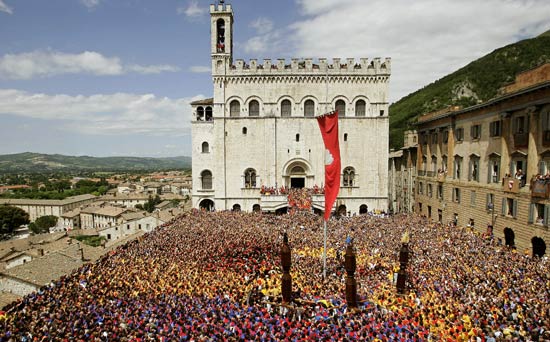
Things to do in Gubbio
There are more things to do in Gubbio: do not leave the “city of fools,” without a trip to Ranghiasci Park, the green area that climbs along the old walls starting from one of the ancient gates of the city and offering one of the best views of Gubbio.
Perhaps you did not know that … >> Only in Gubbio you can get the “fool licence”. How? Reach Largo Bargello where you will find a small fountain. Run for three times around the fountain and you will earn a “fool licence” (and eugubina citizenship )!
If you do not suffer from vertigo worth the climb to the summit of Ingino Mount (908 m asl) with the cable car to admire St. Ubaldo’s Basilica which hosts the remains of the saint and the famous Ceri.
If you like to discover the real city life, visit to one of the ancient blacksmiths shops that will you find around the town, where they still work incandescent materials beating on the anvil.
There are offers for vacation rentals and hotels in the areas of Gubbio! Click and Consult them immediately.
Gubbio’s food, Umbrian cuisine, Italian food
You got hungry? Discover what our mini-guide suggests you about what to eat in Gubbio!

See the best restaurants in the area of Gubbio! >> Click here and book.
There is a lot of choice on what to eat in Gubbio; typical delicious dishes you can not leave without having tasted! Try crescia (a kind of flat salted bread to taste with the local cured meat or with Friccò of lamb, duck, chicken and rabbit), cheese pie, the dishes with truffles and brustengo, a fried bread that can be eaten and served with bacon, ham, sausage, onion and rosemary. The traditional desserts include the Ganascioni of Saint Lucia’s Sisters, which were formerly offered together with the Barcarolle (barley coffee and anisette).
If you’ve decided to visit Gubbio and taste Umbrian cuisine you should contact now farmhouses near Gubbio >> click this link.

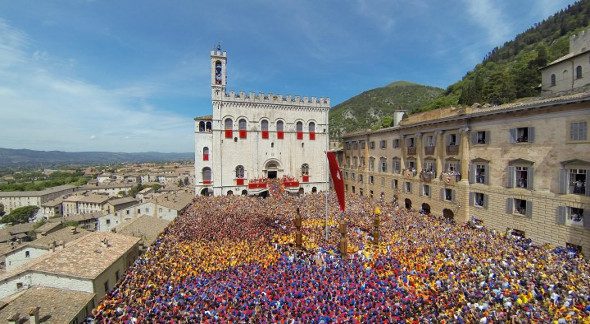






Comment (0)